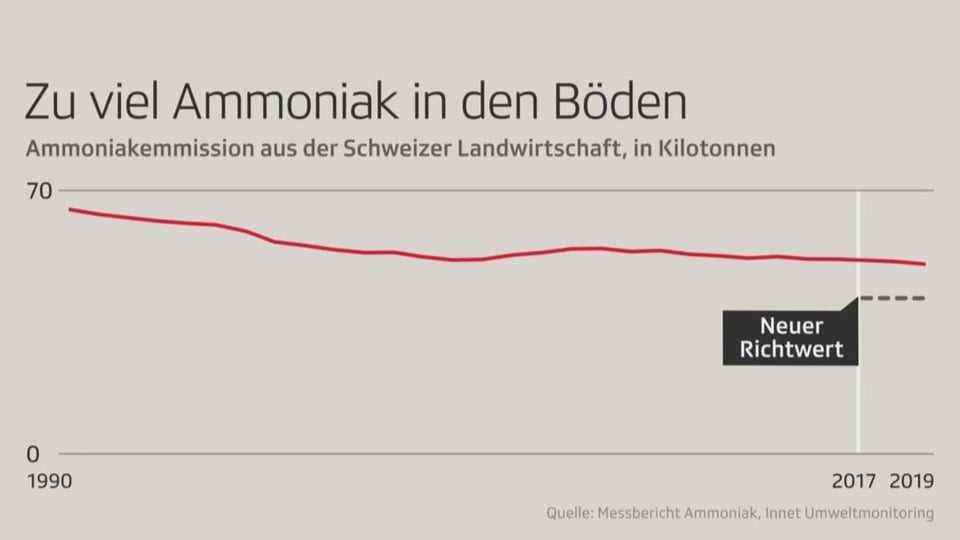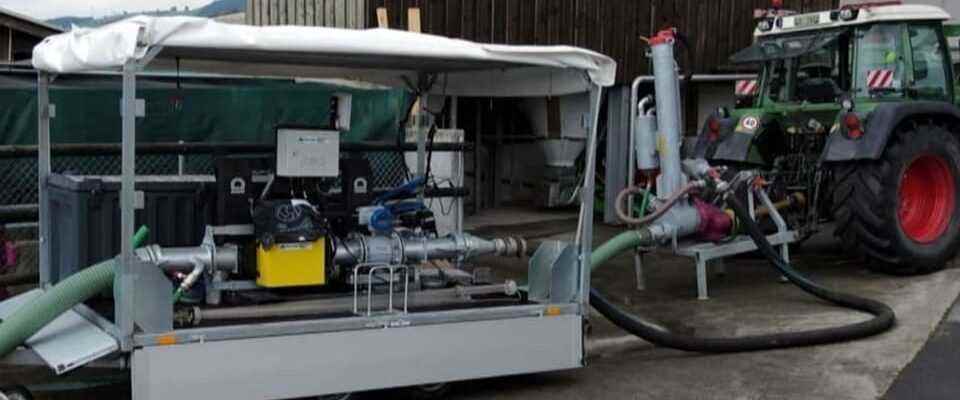contents
Farm animals pollute the environment with nitrogen and phosphorus. The Canton of Lucerne is now having a scientific study of how things could be done better.
No canton in Switzerland has more livestock than Lucerne. The figures are impressive: almost a third of all Swiss pigs live here – namely around 430,000.
However, a very high density of livestock also means above-average emissions of pollutants. With a research project, the canton now wants to gain knowledge that could help to reduce the pollutants.
Legend:
Agroscope’s new measuring station in action.
SRF
The federal research center Agroscope is using a new measuring station especially for this purpose. This examines manure and compost for their contents. “Measure, measure, measure!” is how project manager Thomas Steinsberger sums up his task. In short, the researchers analyze what the animals eat and what then goes out at the back.
Learn from the measurement results
“It’s important to know which nutrients are in farmyard manure,” says Steinsberger, “because then the farmers can learn which measures can improve the quality.” The aim is to establish a nutrient cycle on farms in which as little nitrogen and phosphorus as possible pollutes the soil, water and air.
26 companies are taking part in the research project. One of them is that of Bruno Feierabend from Inwil with around 500 pigs. “We’re already doing a lot here,” he says. “We prepare farmyard manure, we ferment and compost it.” He hopes that the research project will provide answers to the question “whether what we’re doing here works or not.”

Legend:
The ammonia load on the soil is only slowly declining.
SRF
One thing is certain: although the topic of pollutants in agriculture has been hotly debated for years, the situation in the canton of Lucerne has not changed as desired. Despite all efforts, the ammonia levels in the soil are only slowly falling.
Too slow, thinks Sabine Heselhaus, co-president of the Doctors for Environmental Protection. There is always talk of a transformation in agriculture, she says. “But what makes me a little sad is that a real transformation – i.e. a change in the usual food production – is not taking place.”
Fewer animals as a solution?
An obvious change would be to reduce inventories. Fewer animals also emit fewer pollutants. “That would be a possibility,” admits Markus Kretz. However, the President of the Lucerne Farmers’ Association puts it into perspective: “The degree of self-sufficiency in meat is below 100 percent everywhere in Switzerland, and even below 60 percent for chicken. It cannot be the goal to simply shift our footprint somewhere else. We want to solve our problems here.” As long as the demand for meat is still so high, it makes the most sense to improve production here.
It cannot be the goal to simply shift our footprint somewhere else.
The responsible Lucerne government councilor, Fabian Peter, also denies that environmental protection in agriculture is progressing too slowly. “The farmers have to keep investing and then it takes time to amortize these investments.” It only works step by step, says Peter, adding: “It’s better to take small steps than none at all.”
Small steps are better than none at all.
The new measuring station should now provide the basis for the next steps. With technical innovations, it is intended to help ensure that agriculture is less of a burden on the environment in the future.
